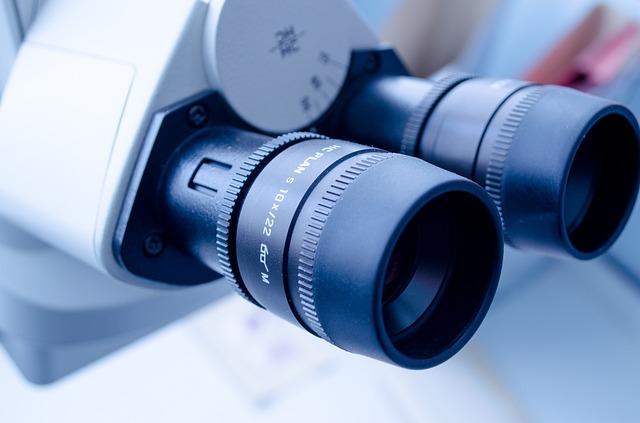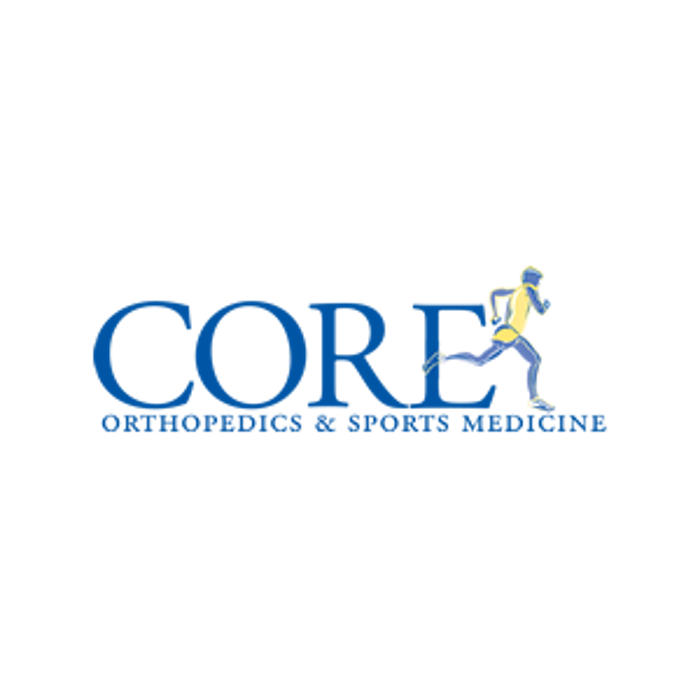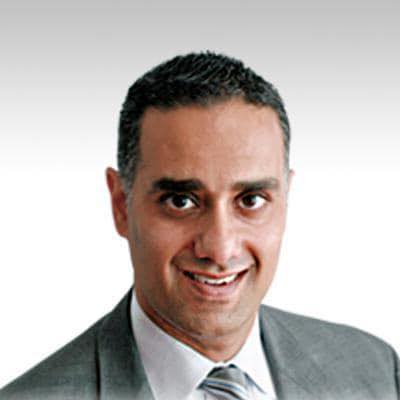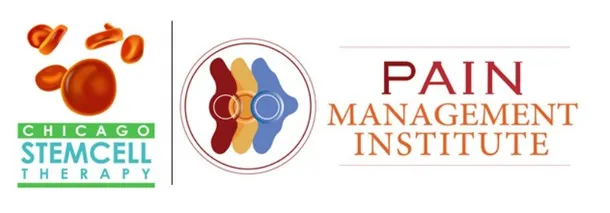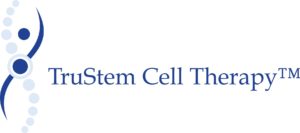Stem Cell Therapy in Illinois: A Comprehensive Guide For IL Residents
Welcome to the world of stem cell therapy! Imagine a world where a small injection could help regenerate damaged tissue, much like how a gardener plants seeds to rejuvenate a wilting garden. That’s the promise and potential of regenerative medicine. For residents in the Prairie State, especially those in the bustling city of Chicago, stem cell therapy is becoming an increasingly popular option for those seeking alternative treatments for various conditions.
Now, you might be wondering, “What exactly are stem cells?” Think of these cells as the body’s raw materials, cells from which all other cells with specialized functions are generated. They’re like the clay in the hands of a sculptor, ready to be molded into any form. In the realm of regenerative therapies, these cells are harvested, often from bone marrow or adipose tissue, and then injected into the injured area to promote natural healing.
This guide is designed to provide a comprehensive overview of stem cell therapies available in IL. Whether you’re an athlete considering orthopedic treatments in sports medicine or someone suffering from degenerative conditions like osteoarthritis, we aim to shed light on how regenerative medicine in Chicago and beyond can be a game-changer.
From the bone marrow aspirate process to understanding the difference between embryonic stem cells and adult stem cells, we’ve got you covered. So, buckle up as we embark on this enlightening journey into the future of medicine, right here in Illinois.

Understanding Stem Cells
Diving deeper into the world of regenerative medicine, it’s essential to grasp the basics of what these cells are and why they’re so special. Imagine a toolbox. In this toolbox, you have various tools, each designed for a specific task. Similarly, our body has a plethora of cells, each with a unique function. But what if you had a magical tool that could transform into any tool you needed? That’s essentially what stem cells are for our body.
Types of Stem Cells:
Embryonic Stem Cells: Picture the early stages of life, a time when possibilities are endless. These cells come from embryos and have the unique ability to turn into any cell type in the body. They’re like the blank canvas of an artist, ready to be painted in any color.
Adult Stem Cells (or Mesenchymal Stem Cells): Found in various parts of our body, including bone marrow, these cells are more specialized. Think of them as the seasoned professionals of the cell world. They can’t become any cell like embryonic ones, but they can transform into some specific types. For instance, stem cells from the bone marrow can become bone, cartilage, or blood cells.
Induced Pluripotent Stem Cells (iPSCs): Science’s magic trick! These are regular cells that scientists have turned back into stem cells. It’s like turning a butterfly back into a caterpillar.
How They Work:
Imagine a construction site after a storm, with damaged structures and debris everywhere. Now, imagine a team of workers coming in, assessing the damage, and starting repairs. That’s how stem cells operate. When injected into an injured area, they rush to the site, understand the damage, and begin the natural healing process. They can regenerate damaged tissue, be it cartilage, tendon, or ligament.
The Role of Stem Cells in the Body:
These cells are the body’s repair system. When we suffer injuries, be it a torn ligament from a sports activity or degenerative changes due to age, these cells play a crucial role in the healing process. They’re like the paramedics of our body, always ready to heal and repair.
The Science Behind Stem Cell Therapy
The magic of stem cell therapy isn’t just a wave of a wand; it’s grounded in rigorous science and research. It’s like baking a cake: while the end result is a delicious treat, there’s a precise recipe and method behind it. Let’s break down the science of how stem cells are used in regenerative medicine.
Harvesting Stem Cells:
The first step in the process is to obtain the stem cells. Often, these are extracted from the patient’s own bone marrow or adipose tissue. Imagine a farmer carefully selecting seeds from a plant; that’s how doctors harvest these cells. The bone marrow aspirate process involves drawing a small amount of bone marrow, typically from the hip area, in a procedure that lasts about 15 minutes. This aspirate is then spun in a centrifuge, and a concentrated stem cell sample is separated.
Preparing the Stem Cells:
Once the concentrated stem cell sample is obtained, it’s time to prepare it for injection. This step ensures that the cells are activated and ready to work their magic. In some cases, platelet-rich plasma (PRP) is added to the mix. PRP is like the fertilizer for our plant seeds, enhancing the healing properties of the stem cells.
Stem Cell Injection:
The prepared sample is then injected directly into the injured area. This is where the magic happens! The injected stem cells get to work, identifying damaged or diseased tissues and kickstarting the body’s natural healing mechanism. It’s like sending in a team of expert builders to a construction site, ready to repair and rebuild.
Post-Treatment Care:
After the injection, it’s crucial to follow a specific treatment plan to ensure the best results. This might include physical therapy or other regenerative therapies to support and enhance the healing process. Think of it as the aftercare for a newly planted garden, ensuring the plants grow strong and healthy.
Monitoring and Follow-Up:
Regular check-ups are essential to monitor the progress and ensure that the therapy is working as intended. It’s like periodic visits to our garden to check on the plants, prune them, and ensure they’re growing well.
The Role of Clinical Trials:
Clinical trials play a pivotal role in advancing the field of stem cell therapy. These trials test new methods, ensuring they’re safe and effective. For those considering this form of treatment, it’s always a good idea to inquire about ongoing clinical trials, as they might offer cutting-edge treatments.

Benefits of Stem Cell Therapy
The realm of stem cell therapy is akin to discovering a hidden treasure trove of solutions for various medical conditions. It’s like stumbling upon a secret garden that has the potential to heal and rejuvenate. Let’s explore the myriad benefits that this form of regenerative medicine offers.
Treatment of Degenerative Diseases:
Stem cell therapies have shown promise in treating degenerative conditions like osteoarthritis, Parkinson’s, and Alzheimer’s. Imagine a worn-out tapestry slowly being restored to its original glory; that’s how these powerful cells can help rejuvenate damaged tissues and cells.
Regenerative Power for Musculoskeletal Injuries:
For those in the field of sports medicine or anyone with musculoskeletal injuries, stem cell therapy can be a game-changer. Whether it’s a damaged cartilage, torn tendon, or injured ligament, stem cells can promote healing and reduce pain. It’s like having a team of expert craftsmen repairing a delicate piece of art.
Potential in Organ Transplantation:
The waiting lists for organ transplants are long, and many patients face a race against time. Stem cell therapy offers hope by potentially creating organs or tissues in the lab. Imagine growing a plant from a single seed; similarly, stem cells can grow into complex organs.
Treatment for Autoimmune Diseases:
For those battling autoimmune conditions, where the body mistakenly attacks itself, stem cells offer a ray of hope. They can help modulate the immune system, bringing it back to a state of balance. It’s like recalibrating a misaligned musical instrument to produce harmonious tunes.
Natural Healing Mechanism:
One of the standout benefits of stem cell injection is that it utilizes the body’s natural healing mechanism. Instead of external drugs or interventions, the body’s own cells are used to promote healing. Think of it as using natural ingredients to cook a wholesome meal, ensuring it’s both delicious and nutritious.
Potential in Treating Blood Diseases:
Stem cell therapies have been successfully used in treating various types of blood diseases. It’s like having a water purifier that can remove all impurities, ensuring clean and safe water.
Reduced Need for Surgeries:
For many, stem cell therapy can reduce or even eliminate the need for invasive surgeries. It’s the difference between patching up a small hole in a wall versus tearing down the entire wall and rebuilding it.
Legal and Ethical Considerations in Illinois
Navigating the world of stem cell therapy isn’t just about understanding the science and benefits. It’s also crucial to be aware of the legal and ethical landscape, especially for residents in IL. Think of it as understanding the rules of a game before playing; it ensures you make informed decisions and play safely.
Illinois State Regulations on Stem Cell Research and Therapy:
In IL, there are specific regulations governing stem cell research and treatments. These laws ensure that all procedures are conducted ethically and safely. It’s akin to having traffic rules in place; they’re there to protect everyone involved.
Ethical Debates Surrounding Stem Cell Usage:
The use of embryonic stem cells has been a topic of ethical debate. While they hold immense potential, they are derived from embryos, leading to discussions about the sanctity of life. It’s a delicate balance, much like weighing the value of a rare gem against its historical significance.
Patient Rights and Informed Consent:
Before undergoing any stem cell treatment, patients have the right to be fully informed about the procedure, its risks, benefits, and alternatives. This informed consent process ensures that patients make decisions based on complete knowledge. Imagine signing up for an adventure sport; you’d want to know all the risks involved before diving in.
Clinical Trials and Their Importance:
Clinical trials are the backbone of advancing regenerative medicine. They test new treatments for safety and efficacy. However, it’s essential for patients to understand that participating in a trial has its own set of rules and regulations. It’s like testing a new recipe; while it might lead to a delicious dish, there’s always a risk it might not turn out as expected.
Use of Stem Cells from Various Sources:
While embryonic stem cells are often in the spotlight, other sources, like adult stem cells from bone marrow or adipose tissue, don’t carry the same ethical concerns. It’s akin to choosing between different energy sources; while some might be controversial, others are widely accepted.
The Role of Medical Institutions:
Medical institutions that offer stem cell therapies have a responsibility to adhere to state regulations, ensure patient safety, and provide transparent information. Think of them as the guardians of the secret garden; they ensure that everything within is safe and thriving.
Finding a Reputable Stem Cell Clinic in Illinois
Embarking on the journey of stem cell therapy is like setting out on an expedition. You wouldn’t start a trek without a reliable guide, would you? Similarly, choosing the right clinic is paramount to ensure a safe and effective treatment journey. For those in IL, especially in the vibrant city of Chicago, here’s how to find a trustworthy stem cell clinic.
Accreditation and Certifications:
Ensure the clinic has the necessary accreditations from recognized medical boards or associations. It’s like checking if a restaurant has a health and safety certificate before dining there.
Experienced Medical Professionals:
Look for clinics with experienced doctors and medical staff who specialize in regenerative medicine. Think of it as choosing a seasoned chef over an amateur when you want a gourmet meal.
Transparent Treatment Protocols:
A reputable clinic will have clear and transparent treatment protocols. They should be open about the sources of their stem cells, be it embryonic, adult stem, or others. It’s akin to a transparent ingredient list on a food package.
Patient Reviews and Testimonials:
Hearing from others who’ve walked the path can provide invaluable insights. Look for patient testimonials, especially statements like “I’m pain free” or experiences related to the healing process. It’s like reading reviews before buying a product online.
Ongoing Research and Clinical Trials:
Clinics at the forefront of regenerative therapies often participate in ongoing research and clinical trials. It indicates their commitment to advancing the field. Think of it as a tech company always looking to innovate and upgrade its products.
Red Flags to Watch Out For:
Beware of clinics that make exaggerated claims or promise miracle cures. If something sounds too good to be true, it probably is. It’s like spotting a fake designer bag; the details often give it away.
Consultation Process:
A reputable clinic will offer a thorough consultation process, helping you understand if you’re a candidate for stem cell therapy and discussing the potential risks and benefits. It’s similar to a tailor taking precise measurements before crafting a custom outfit.
Location and Facilities:
While not the most crucial factor, considering the location can be essential for convenience, especially for those looking for Chicago stem cell therapy options. Additionally, check if the clinic has state-of-the-art facilities and equipment. It’s like choosing a hotel; you’d want it to be both accessible and well-equipped.
Costs and Insurance Coverage
Venturing into the world of stem cell therapy can often raise questions about the financial aspects. It’s akin to planning a vacation; while the destination is exciting, understanding the costs and budgeting is essential. For those in IL, here’s a breakdown of the costs associated with stem cell treatments and the nuances of insurance coverage.
Average Cost of Stem Cell Treatments:
The cost of stem cell therapy can vary based on the type of treatment, the source of the stem cells, and the clinic’s location. For instance, treatments in metropolitan areas like Chicago might differ from those in smaller towns. It’s similar to the price variation of a dish in a city restaurant versus a countryside diner.
Factors Influencing the Cost:
Type of Treatment: Specific treatments, like orthopedic procedures or treatments for degenerative conditions, might have different costs.
Source of Stem Cells: Treatments using embryonic stem cells might differ in cost from those using adult stem cells or bone marrow aspirate.
Duration and Complexity: More extended or complex procedures, like multiple injections or combined therapies with PRP, might be priced higher.
Insurance Coverage:
Currently, many insurance companies consider stem cell treatments as experimental and might not cover them. However, certain procedures, especially those backed by substantial research, might receive partial coverage. It’s like having a travel insurance policy; not all activities might be covered, but some essential ones might be.
Financial Assistance and Payment Plans:
Some clinics offer financial assistance or flexible payment plans for patients. It’s worth inquiring and exploring these options, much like looking for early-bird discounts or installment plans when booking a holiday.
Additional Costs:
Beyond the treatment itself, consider other costs like consultations, post-treatment care, or any required medications. It’s like budgeting for a trip; you’d account for meals, transportation, and souvenirs, not just the hotel stay.
Insurance Queries:
Always discuss with your insurance provider to understand what’s covered and what’s not. Some treatments, especially those related to sports medicine or orthopedics, might have different coverage criteria. It’s akin to checking if your travel insurance covers adventure sports or specific activities.
Risks and Side Effects
Just as every rose has its thorns, stem cell therapy, despite its immense potential, comes with its set of risks and side effects. It’s similar to embarking on a mountain hike; while the view from the top is breathtaking, there are challenges along the way. For those considering stem cell treatments in IL, it’s essential to be well-informed about the potential pitfalls.
Common Side Effects:
Injection Site Reactions: Just as a bee sting might cause redness or swelling, the injection site might exhibit similar reactions post-treatment.
Mild Pain or Discomfort: Think of it as the soreness you feel after a rigorous workout. Some patients might experience mild pain or discomfort post-procedure.
Fatigue: Just as a long day might leave you feeling drained, some patients report feeling fatigued after the treatment.
Potential Complications:
Infection: As with any procedure that breaks the skin, there’s a risk of infection. It’s akin to getting a cut while gardening; if not cleaned properly, it might get infected.
Immune Rejection: Especially in treatments using non-autologous stem cells, the body might reject the introduced cells. Imagine planting a tropical plant in a desert; it might not thrive due to the unsuitable environment.
Overgrowth of Cells: In rare cases, the injected stem cells might grow uncontrollably, leading to complications. It’s like planting a creeper that grows too fast, overshadowing other plants.
Importance of Choosing a Reputable Clinic:
The expertise of the medical professionals and the standards of the clinic play a crucial role in mitigating risks. It’s like choosing an experienced guide for a challenging trek; their expertise can help navigate potential pitfalls.
Post-Treatment Care and Follow-Up:
Ensuring proper care after the treatment can significantly reduce potential side effects. Regular follow-ups, adhering to prescribed medications, and following post-treatment guidelines are essential. Think of it as the care you’d provide to a newly planted sapling, ensuring it grows strong and healthy.
Informed Decision Making:
Being aware of the risks allows patients to make informed decisions. Discuss potential side effects with the medical team, ask questions, and weigh the pros and cons. It’s like reading the safety guidelines before trying out a new adventure sport.
The Future of Stem Cell Therapy in Illinois
As we stand on the cusp of medical innovation, the horizon of stem cell therapy in IL looks promising and expansive. It’s akin to gazing at the dawn of a new day, filled with hope and potential. Let’s explore what the future holds for stem cell treatments and the exciting developments on the horizon.
Expanding Treatment Horizons:
While current treatments focus primarily on orthopedic issues, degenerative diseases, and certain autoimmune conditions, ongoing research suggests that the scope of stem cell therapies could expand to treat conditions like heart diseases, diabetes, and even neurological disorders. It’s like discovering that a Swiss Army knife has even more tools than you initially thought.
Personalized Stem Cell Treatments:
The future might see treatments tailored to individual patients, ensuring higher efficacy and reduced side effects. Imagine a tailor-made suit, crafted to fit you perfectly; that’s how future stem cell treatments might be designed for each patient.
Advancements in Lab-Grown Organs:
With the progress in regenerative medicine, we might soon witness lab-grown organs ready for transplantation, reducing wait times and organ donor shortages. It’s akin to 3D printing a missing puzzle piece, ensuring a perfect fit.
Enhanced Safety Protocols:
As research progresses, we can expect even safer treatment protocols, minimizing risks and maximizing benefits. It’s like upgrading the safety features of a car, ensuring a smoother and safer ride.
Integration with Other Therapies:
Stem cell therapy might be combined with other treatments like gene therapy, offering holistic solutions to complex medical challenges. Think of it as a fusion cuisine, blending the best of two culinary worlds to create a delightful dish.
Increased Accessibility:
With more clinics offering stem cell therapy in Chicago and throughout IL, treatments will become more accessible to residents, ensuring that more people can benefit from this medical marvel.
Ethical and Sustainable Stem Cell Sources:
The future will likely see a shift towards more ethically sourced stem cells, reducing reliance on embryonic cells and focusing more on adult stem cells and other sustainable sources. It’s similar to the shift towards sustainable and ethical farming practices.
Final Thoughts and Looking Ahead
As we draw the curtains on our comprehensive guide to stem cell therapy in IL, it’s time to reflect, consolidate our learnings, and gaze into the future. Embarking on this journey has been akin to traversing a vast landscape, from towering mountains of potential to valleys of caution and rivers of innovation.
The Power of Regenerative Medicine:
At its core, regenerative medicine offers a promise like no other: the potential to heal, restore, and rejuvenate. It’s the magic of nature harnessed by science, allowing the body to tap into its innate healing mechanisms.
A Personalized Approach:
Every individual’s journey with stem cell treatments is unique. It’s essential to approach it with an open mind, armed with knowledge, and guided by expert advice. Think of it as charting your own path in a vast forest; while the terrain might be the same, each traveler’s experience is distinct.
Ethical and Responsible Advancements:
The field of stem cell research and therapy is evolving rapidly. As we move forward, it’s crucial to tread with ethical responsibility, ensuring that every advancement is rooted in safety, transparency, and respect for life.
The Role of Continuous Learning:
The world of stem cell therapy is dynamic, with new research, findings, and innovations emerging regularly. Staying updated and continuously learning is the key to making informed decisions. It’s akin to being a lifelong student in the ever-evolving school of life.
A Word of Gratitude:
We’d like to extend our heartfelt thanks to all the experts, patients, and enthusiasts who’ve shared their insights, experiences, and knowledge. This guide wouldn’t have been possible without their invaluable contributions.
Looking Ahead:
The horizon of stem cell therapy in IL and beyond is shimmering with promise. As research deepens and treatments become more accessible, we can look forward to a future where ailments once deemed untreatable become a thing of the past. It’s a future where the lines between nature’s wonders and scientific marvels blur, opening doors to unparalleled healing and hope.
Illinois Stem Cell Therapy Providers
Here you can find the best stem cell therapy providers in the state of Illinois. Fill out the form and a provider will contact you as soon as possible.
